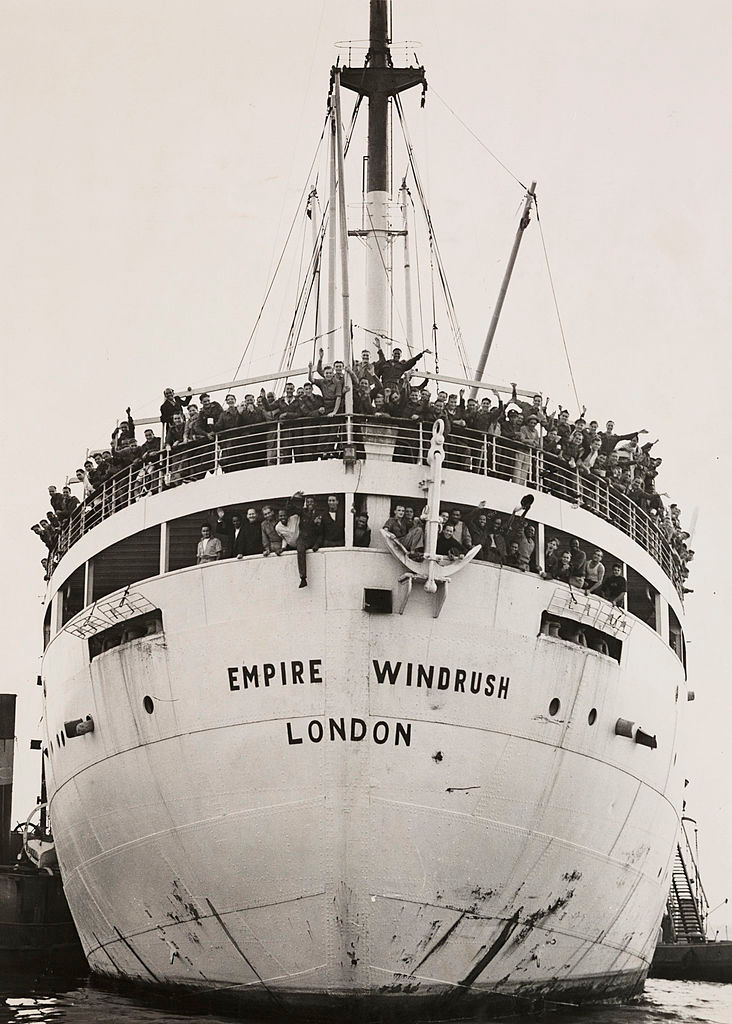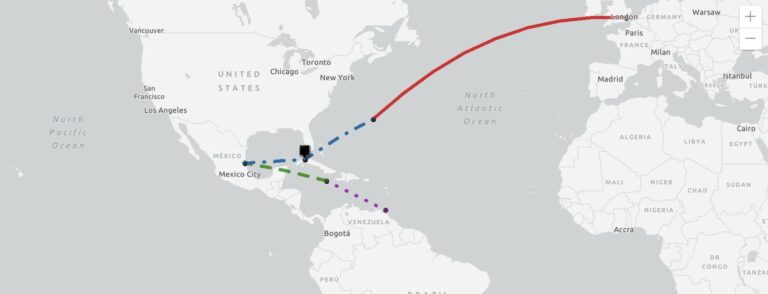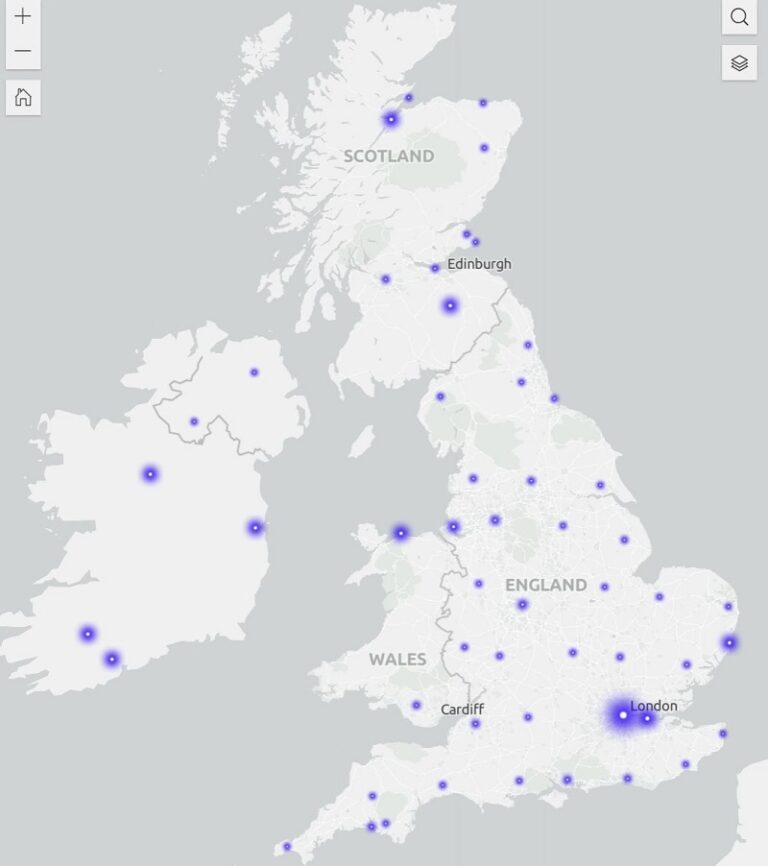Did you know the Empire Windrush was not the first post-war ship to bring passengers from the Caribbean to Britain? The Ormonde docked in Liverpool in March 1947, and the Almanzora arrived in Southampton in December 1947. A new resource Caribbean migration to Britain: A snapshot in time traces passengers’ journeys on all three ships through a series of interactive maps.

Part of The National Archives’ broader Windrush 75 programme, Caribbean migration to Britain provides a unique insight into both individual migration stories and broader migration patterns.
The resource is aimed at teachers and pupils studying migration at school, but will also be of interest to the wider public interested in learning more about the Windrush generation.
Utilising passenger lists to create interactive maps
This project uses passenger lists held at The National Archives. Passenger lists are invaluable records as they provide a wealth of information about the passengers onboard, such as their names, ages, occupations, onward addresses, and their last country of residence. This allows us to map this data and visualise passenger demographics and migration patterns. Many thanks to our volunteers who helped to transcribe the three passenger lists for this project. Whilst this resource focuses on three ships, it is important to note that numerous ships brought passengers from the Caribbean to Britain in the post-war period.

The first series of maps plots the journeys of the Ormonde, Almanzora, and Empire Windrush through the various ports they visited. For example, the Empire Windrush started its journey at Port of Spain (Trinidad), followed by Kingston (Jamaica), Tampico (Mexico), Havana (Cuba), and Bermuda, before crossing the Atlantic to reach Tilbury Docks in June 1948.

The second series of maps model the onward journeys of passengers onboard the Ormonde, Almonzora and Empire Windrush based on their proposed address given on the passenger lists. These show a national migration story, with areas from Cardiff to Lincolnshire to Glasgow listed as intended destinations. For some individuals these addresses would have been temporary accommodation, prior to finding more permanent work and housing. Others settled longer term in these areas, creating their own hubs of Caribbean culture, the legacy of which can still often be seen today. These proposed addresses show the impact of Caribbean migration on many areas, some unexpected, across Britain.

It is important to acknowledge that the passenger lists used to compile these maps contain personal information of people still living or born less than 100 years ago, including that of the children of family groups, who might be identified by their elder relatives. As a result, the names of passengers have been anonymised. The location data is also mapped to cities, towns or village level, not to specific addresses, to prevent identification.
As well as these interactive maps, the resource also includes information on themes such as passengers’ occupations, temporary accommodation, service personnel, the NHS and health care, distressed seamen, Polish refugees onboard the Empire Windrush, and women and children. Within this, case studies of individual passengers are discussed to provide a greater insight into the lives of the Windrush generation. However, these individuals have either passed away or the information about them is publicly available.
The Ormonde – Miss B Agard
The occupations of female passengers travelling on all three ships were largely noted as HD’s, household domestics. For these individuals, they may have worked to support the home or ended up finding work on their arrival in Britain due to the financial pressures they faced. Other professions listed by female passengers included cooks, nurses, secretaries, students, dressmakers, and domestic servants.
Miss B Agard was 35 when she arrived in Liverpool on the Ormonde after travelling from Barbados. The passenger list indicates that she planned to settle in the UK. Agard worked at the time as a domestic servant; her proposed address in Brighton may have been where she had initial work in domestic service lined up.
The Alamanzora – Alan Wilmot
Many passengers onboard all three ships were ex-servicemen, including 22-year-old Alan Wilmot from Jamaica. During the Second World War, he served in the Royal Navy and Royal Air Force. Demobbed to Jamaica in 1946, Wilmot returned to Britain on the Almanzora. His occupation was listed on the passage list as a seaman.
Unlike many of his fellow passengers, Wilmot had a fixed address listed on the passenger list in London. However, he struggled to establish himself and was forced to live temporarily in an abandoned railway carriage whilst working as a dishwasher at the Cumberland Hotel in Marble Arch. His brother, Harry, later joined him in Britain and travelled on the Empire Windrush. Wilmot went on to have a career in music and was part of the Southlanders, a rhythm and blues group. He later helped to establish the West Indian Ex-Servicemen’s Association.
The Empire Windrush – Ena Clare Sullivan
In July 1948, the National Health Service was established. An unprecedented number of healthcare workers were needed to staff Britain’s new NHS, and the British government began to recruit doctors, nurses and healthcare workers from Commonwealth countries and its colonies. Many people who migrated to Britain after the Second World War would go on to work for the NHS.
Ena Clare Sullivan was one of the passengers who listed her occupation as ‘Nurse’. The passenger lists records that she was 35 at the time, from Jamaica, and her onwards address was listed as West Middlesex Hospital, where she trained as a nurse. Ena later went on to work as a nurse in Stoke-on-Trent and Manchester.
Through mapping passengers’ journeys in this new resource, we hope users will learn something new about the Windrush generation, and may even find migration stories linked to their village, town, or county: Explore Caribbean migration to Britain.
Interesting project and so good to hear of some individual stories. One comment: the map showing the route of the Empire Windrush has Barbados in quite the wrong place. The map has it north of Florida when in reality it is a long way South. It would make no sense to sail from Mexico to Britain via Barbados (going South ) if the ship had already reached Mexico sailing northward from Trinidad and Jamaica. Not sure the map is accurate.
Thanks very much for pointing that out, it has now been updated to Bermuda.
Come on, the personal information is not data protection, this is OTT, the information has been available for decades.
The map is wrong for the journeys and is of a much later date. Tanzania did not exist at this date, it was Nyasaland and Tanganyika (I used to stick the stamps in a stamp, book) and other territories in 1961 when they got Independence from Britain. The Democratic Republic of Congo did not exist and is I am sure was part of the Belgian Congo until the 1960s. Angola only got it’s Independence from Portugal in 1975.
Hi, thank you for your comment. To be clear the journeys have been mapped on a current map of the world. It is not intended as a historic view, but rather a modern view of the historical event. All locations relating to the Caribbean journeys (embarkation and arrival points) are unchanged.